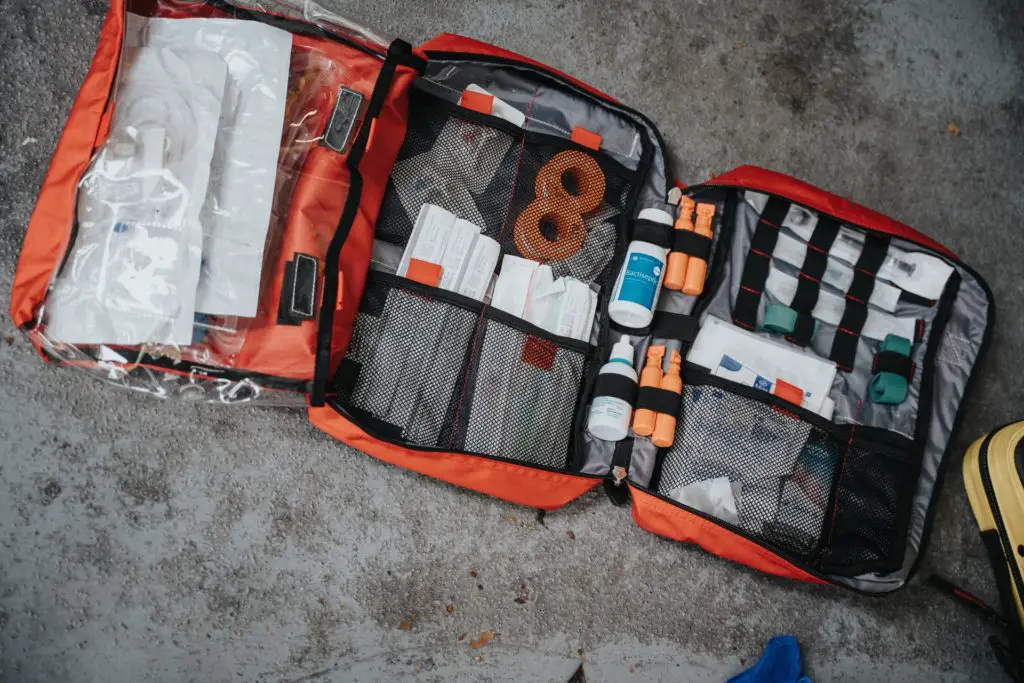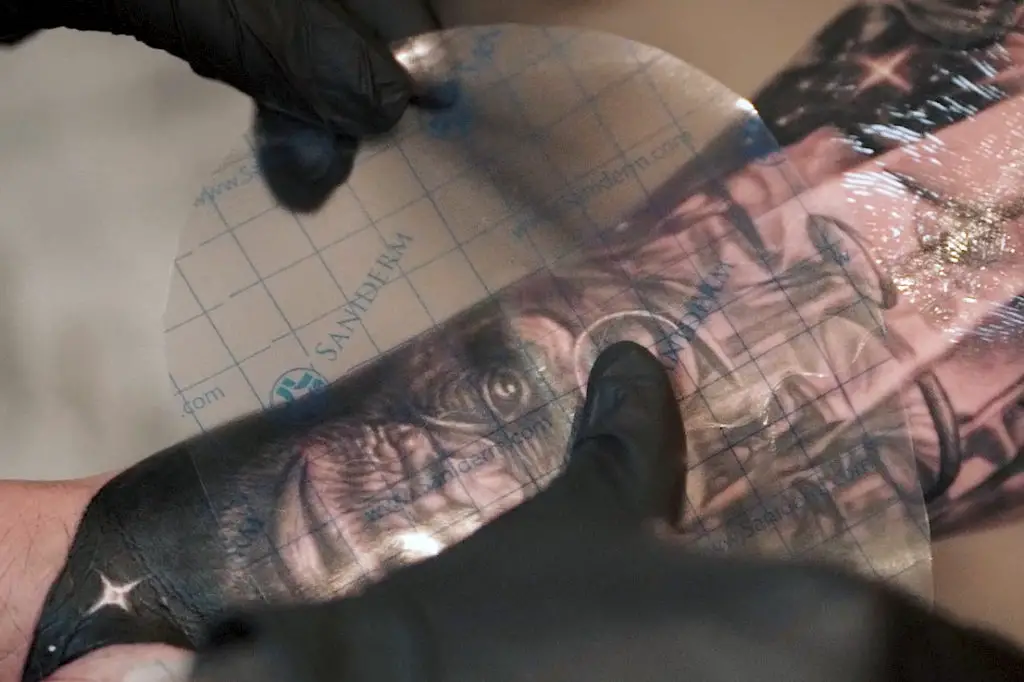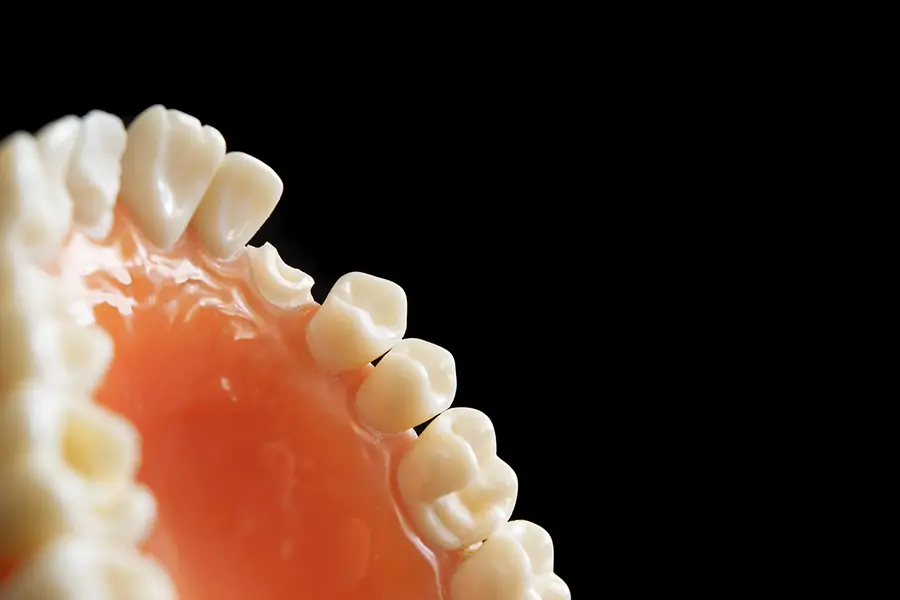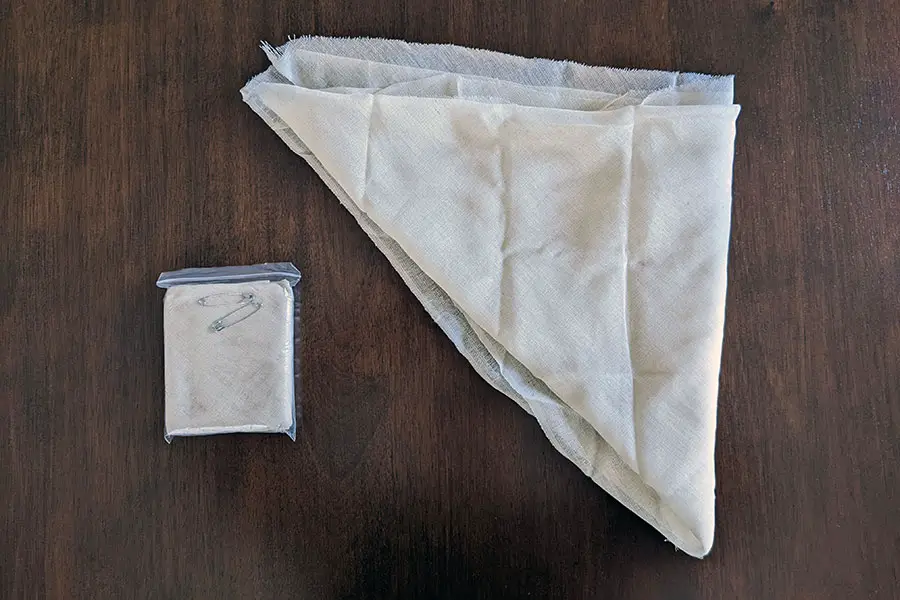Whether you’re creating a homemade first aid kit for the RV, DIYing a medical kit for your vehicle, or you’re assessing the contents of a pre-assembled kit, it’s helpful to understand some of the essential items that you will want to include. Here’s my list of important supplies and their uses. Based on my experience and a review of reputable sources such as the Red Cross and the Mayo Clinic, I’ve assembled the top 20 essential items that you should consider adding to your first aid kit.
First 10 Essentials
The following 10 items form the basis for any kit and included below is a brief description of their uses. Although these items aren’t geared towards severe injuries, there are enough items to help with the everyday small ones or to help you provide first aid until help arrives.
- Adhesive Bandages – This is your typical Band-Aid and they are used to cover and protect small scrapes and cuts. Depending on your anticipated environment, you should consider the material. Do you need waterproof bandages? Or maybe you want a more breathable fabric? Ideally your larger kits will contain a variety. You can also choose an adhesive bandage with an antibiotic coating on the cotton pad which might be beneficial if you don’t have antibiotic ointment handy. Any kit should have a variety of sizes and shapes. Some common types include:
- Typical strip bandage in variety of sizes like 1″x3″, 3/4″x3″, and 5/8″x2 1/4″
- Knuckle bandages
- Fingertip bandages
- Butterfly bandages/butterfly stitches to help close larger cuts
- Antiseptic Pads or Wash / Sanitizing Agent – The first step to taking care of any wound is to clean it. Individually packaged antiseptic wipes (like alcohol pads) are great for smaller kits, while larger kits can benefit from a larger, liquid wash. This can be used to flush dirt or debris out of a wound. Including both options in your kit would be ideal, and both can be used to sanitize equipment or instead of hand sanitizer. An example of a sanitizing agent would be hydrogen peroxide.

- Gauze (roll or pads) – Gauze is a sterile, absorbent pad used to protect larger wounds, help absorb blood, and is especially useful for more significant, traumatic wounds. Gauze can come in pre-cut pads of various sizes as well as in roll form. If you don’t include scissors in your kit, pads may be the better choice. Ideally, any kit would contain various size pads as well as a roll. A 3″ width is a typical roll size.

- Medical / Surgical Tape – Surgical tape is the duct tape of the medical world and goes hand in hand with gauze. It is an adhesive tape used to hold gauze or bandages in place or can even assist with splints. Like adhesive bandages, there a several types of tapes for different situations. Transpore tape is probably the best multi-purpose tape. It sticks to everything, it’s versatile, easy to tear, and water proof, although it’s not great for sensitive skin and can be hard to remove. Micropore tape is also good option as it’s gentle, breathable, hypoallergenic, and easy to remove. Note that it is not waterproof and not very flexible.

- Elastic Bandage / ACE bandage – These are stretchable bandages that come in a roll that can either be self-adhering or secured with clips. They are most often used to compress and support joints like the knees, ankles, or wrist, especially in the case of sprains. They are versatile and may also be used to hold a splint in place, better hold bandages or gauze in place, hold ice packs, etc.

- Tweezers – It’s helpful if they are easy to handle, especially in stressful situations. Consider how they will be used; we often think of them for splinters, but they may be used for glass, dirt, and other debris. They could also be used for insect stingers or tick removal.

- Antibiotic Ointment – Antibiotic ointment can be applied to the wound directly or to the bandage and helps protect the wound, keep it from sticking to the bandage, and promote healing. Note that it isn’t meant for larger areas and is meant to be used on the surface. It can be sold as individual packets or in small tubes.

- Instant Cold Pack – If the medical kit is not used in a place where there’s access to a freezer, instant ice packs can be useful in reducing swelling and pain, help to ease irritation from insect bites or stings, and can be used for burns.

- Single Dose Medication Packets – Single packets make keeping count easy and avoids the fumbling with an oversized bottle. For home or office first aid kits, bottles may be easier and more cost effective. Medications to include:
- Antihistamine (like Benadryl) to calm allergic reactions
- Ibuprofen / NSAIDS for pain relief and inflammation
- Aspirin for pain relief and fever reduction
- Pepto-Bismol for diarrhea, upset stomach, nausea, and heartburn
- First Aid Manual – There are many steps that can be taken to provide first aid to someone who is sick or injured that do not require special equipment or that can be improvised based on materials that are available. Cell phones are not always available, and you may not have time to verify that the advice comes from a reputable source. There are plenty of shapes and sizes, so you should have no trouble finding one that fits with your kit.
10 more items to complete your first aid kit
As we add items to our kits, we should consider the needs of helping others or dealing with more serious situations.
- Scissors – Scissors are always useful for cutting bandages, tape, clothing, etc. You’ll often see two types:
- Trauma shears are usually larger and more robust with angled blades and are probably the most universal. They tend to have blunt tips to help keep victims safe when cutting clothing.
- Bandage scissors tend to have smaller, pointier, blades that are meant to be able to slip under bandages to cut them off.
For your average kit, you can probably find a pair that is somewhere in between, but consider the use of your kit and if one pair will be more useful than the other.
- Medical Grade Disposable Gloves – These are important, especially if assisting strangers, to stop the transfer bacteria, dirt, viruses, etc. Look for nitrile gloves as the victim may be allergic to latex or rubber.
- Hydrocortisone Cream / Calamine Lotion – Both can help with the itching associated with poison ivy, poison oak, insect bites, or rashes. Both are good options but remember that hydrocortisone cream is not good in areas prone to fungal infection like the genitals or between toes. You can often find these sold in individual packets in addition to larger tubes or bottles.

- Burn Gel – This should only be used on minor burns, but can be helpful to relieve the pain and to moisturize the burn to keep it from drying out.

- Triangular Bandage – A triangular bandage is a large cloth bandage that can be used as a sling, to help splint a broken limb, to wrap major wounds or wrap around the head, or can be used as a tourniquet. They are fairly larger and typically are around 40″x40″x56″. It’s also a good idea to keep safety pins in your kit to help hold the bandage in place.
- Personal Items – This could consist of several items, depending on the needs of the users of the medical kits. For a travel first aid kit, you may want to include emergency contact information or medical history. In other cases, you may want to include prescription medication or an EpiPen. Maybe you want to include your blood type or the allergies of the members of your household?
- Thermometer – Although you may have one in your home, it may come in handy to have at the office or in your vehicle. You may also find it useful to just keep a spare in the first aid kit at all times just for redundancy. Digital thermometer are usually the best option, or you may want to consider single-use disposable thermometers for the office.

- Mouthpiece for CPR – If your medical kit is located outside of the home, including a mouthpiece can keep the rescuer from contracting any airborne or bodily fluid transferred bacteria, viruses, or diseases.

- SAM Splints – SAM splints (structural aluminum malleable) are lightweight and versatile rolls made of aluminum and foam padding used to quickly immobilize and splint a limb. They are available in several sizes, but can also be cut with normal scissors. They have the added benefit of being reusable.

- Hemostatic Agents – Although it’s last on the list, it is one of the most important. For traumatic injuries with severe bleeding, hemostatic agents are crucial to help the blood clot quickly. Hemostatic Agents can come in a powder form, but a hemostatic gauze is probably the best option for your first aid kit.

Keeping a well-stocked first-aid kit in an easily accessible location can be one of the best steps you can take to keep you and those around you safe ready for an emergency.
What do you absolutely have to keep in your first aid kit? Let us know in the comments below!






